How to recycle and reuse old ceramics?
In a world that often prioritizes new over old, recycling and reusing old ceramics presents a unique opportunity to blend creativity with sustainability. Whether you have a collection of chipped plates gathering dust or a broken pot that once held a beautiful plant, there’s a treasure trove of potential waiting to be unleashed. By embracing innovative methods for recycling ceramics, we can not only reduce waste but also breathe new life into these often-overlooked items. Imagine transforming a shattered vase into a stunning garden feature or a cracked mug into a charming planter! This article will guide you through various creative projects that highlight the beauty of upcycling while promoting environmentally friendly practices.
Ceramics are fascinating materials made from clay and other inorganic raw materials, shaped and then hardened by heat. They come in various forms, including pottery, porcelain, and stoneware, each with its unique characteristics. However, the environmental impact of ceramic waste can be significant. When ceramics are discarded, they often end up in landfills, where they can take thousands of years to decompose. This waste not only contributes to pollution but also squanders the resources that went into their production. Therefore, understanding the importance of recycling and reusing these materials is crucial in our journey toward a more sustainable lifestyle.
Now that we understand the significance of ceramics, let’s dive into some exciting upcycling projects! The beauty of old ceramics lies in their potential to be transformed into something entirely new. Here are some innovative ideas to inspire your creativity:
One of the most delightful ways to repurpose old ceramics is by turning them into charming planters and pots. Not only does this add a rustic touch to your gardening, but it also promotes eco-friendly practices. You can use broken ceramic pieces to create stunning planters that showcase the beauty of imperfection.
Have you ever thought about how shattered ceramic pots can become beautiful planters? Instead of tossing them out, embrace their brokenness! You can take the larger shards and arrange them in a way that creates a unique, layered look. Fill the base with soil and plant your favorite flowers or succulents. This technique not only highlights the beauty of the shattered pieces but also gives your garden a whimsical touch.
If you have old ceramic bowls or cups that have seen better days, consider turning them into decorative plant holders. Simply drill a drainage hole at the bottom, fill it with soil, and plant your greenery. These artistic holders can enhance both indoor and outdoor spaces, adding a splash of personality to your decor.
Chipped or outdated ceramic tableware doesn’t have to end up in the trash. With a little creativity, you can transform them into stylish and functional items. For instance, consider using old plates to create unique wall art or serving trays. By painting or decoupaging them, you can give these pieces a fresh purpose while reducing kitchen waste.
Sometimes, the best way to recycle ceramics is to repair them. Instead of discarding broken pieces, learn how to restore them using simple techniques. This not only extends the lifespan of cherished items but also allows you to keep memories alive.
When it comes to repairing ceramics, the right adhesive is essential. Epoxy is often the best choice, as it provides a strong bond and is water-resistant. Applying it carefully can restore your favorite mugs or plates to their former glory, allowing you to enjoy them once again.
Another fantastic way to recycle broken ceramics is by creating beautiful mosaic art. Gather your broken pieces and let your imagination run wild! You can design stunning decorative pieces for your home or garden, turning waste into art. The process is not only therapeutic but also a wonderful way to express your creativity.
Q: Can all ceramics be recycled?
A: Not all ceramics can be recycled in traditional recycling programs, but many can be repurposed or upcycled into new items.
Q: How can I safely break ceramics for projects?
A: Always wear safety goggles and gloves when breaking ceramics. Use a hammer or a sturdy tool and place the item in a cloth bag to contain the shards.
Q: Are there any specific adhesives recommended for ceramic repairs?
A: Yes, epoxy and super glue are great options for repairing ceramics, as they provide strong bonds and are often water-resistant.
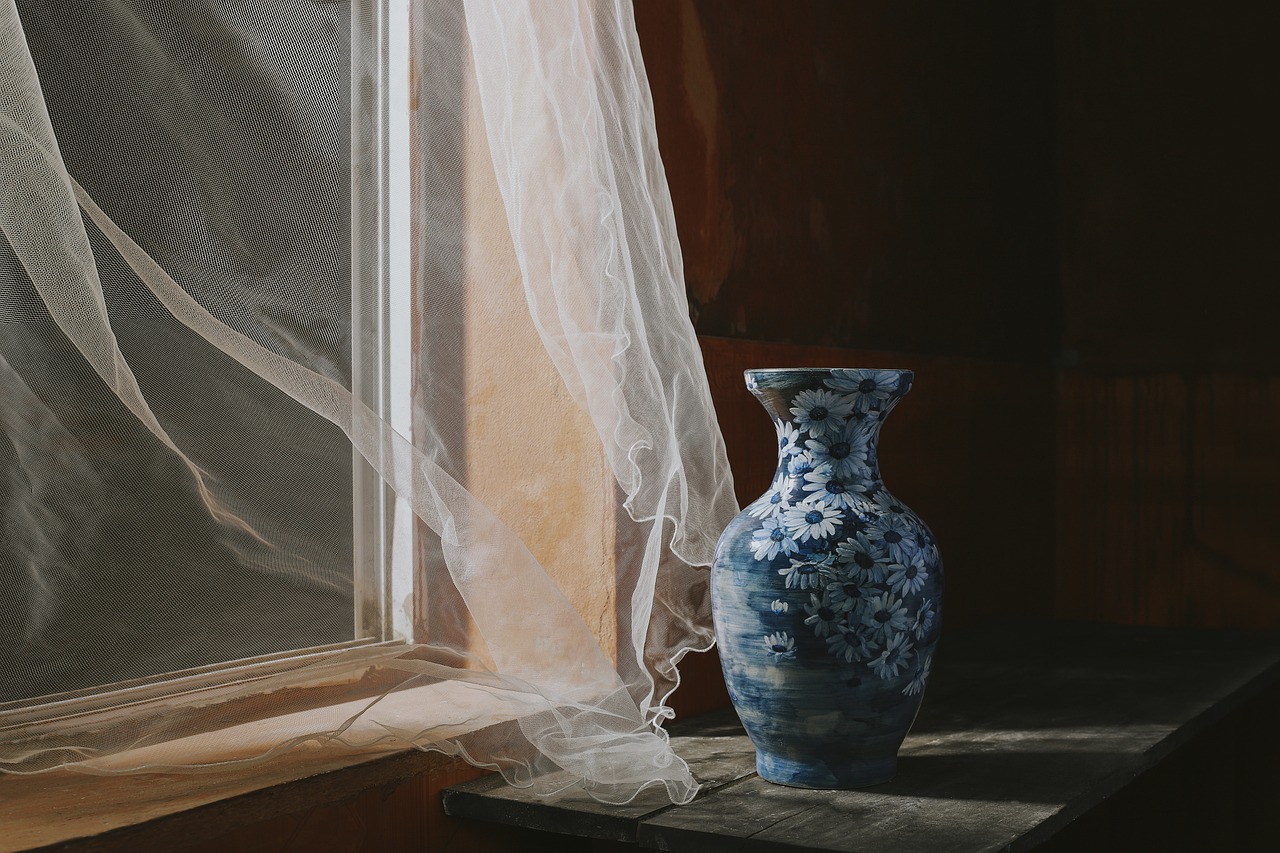
Understanding Ceramics
Ceramics are fascinating materials that have been part of human culture for thousands of years. They are made by shaping and then firing a non-metallic mineral, such as clay, at high temperatures. This process transforms the raw materials into a durable and often beautiful product. The **composition** of ceramics typically includes clay, earthen minerals, and water, which, when combined and heated, create a solid structure that can withstand wear and tear. However, as much as we love ceramics, they also have a significant environmental impact, especially when we consider the waste generated from broken or unused items.
When ceramics break, they are often discarded, contributing to landfill waste. In fact, the **Environmental Protection Agency (EPA)** estimates that ceramics account for a notable percentage of municipal solid waste. This is where the importance of recycling and reusing comes into play. By finding innovative ways to repurpose these materials, we can not only minimize waste but also embrace a more sustainable lifestyle. It's a win-win situation: we save the planet while unleashing our creativity!
Moreover, understanding ceramics isn't just about their physical properties; it's also about their cultural significance. Different cultures have unique styles of ceramics, from the delicate porcelain of China to the robust stoneware of Europe. Each piece tells a story, reflecting the traditions and artistry of its origin. By recycling and reusing ceramics, we honor these stories and give them a new chapter in our lives.
To truly appreciate the value of ceramics, it's essential to recognize their environmental impact. Here are a few reasons why recycling ceramics is crucial:
- Waste Reduction: Recycling helps divert ceramics from landfills.
- Resource Conservation: By reusing materials, we reduce the need for new resources.
- Energy Savings: The production of new ceramics requires significant energy; recycling saves energy.
In summary, understanding ceramics goes beyond their aesthetic appeal. It encompasses their composition, environmental impact, and cultural significance. By embracing recycling and reusing practices, we can make a positive impact on our planet while celebrating the beauty and history of ceramics.
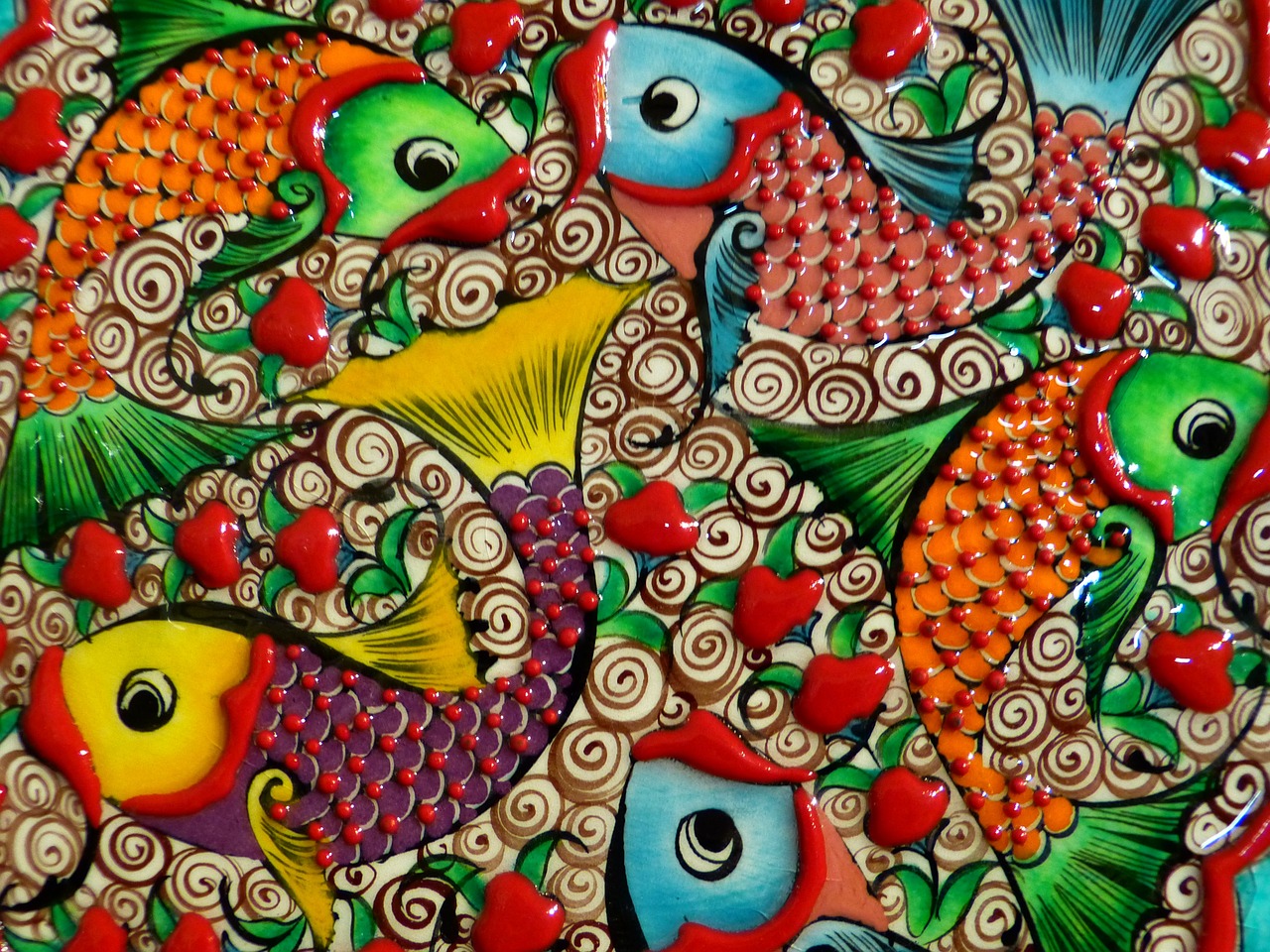
Creative Upcycling Ideas
Upcycling old ceramics is not just about reducing waste; it's about unleashing your creativity and breathing new life into items that might otherwise end up in a landfill. Imagine transforming a chipped plate into a stunning wall art piece or using broken tiles to create a unique garden path. The possibilities are truly endless! With a little imagination and some handy tools, you can turn your discarded ceramics into functional and decorative treasures. So, let's dive into some exciting projects that will inspire you to see your old ceramics in a whole new light.
One of the most delightful ways to upcycle ceramics is by creating planters and pots. Broken pieces of ceramic can be transformed into charming containers for your favorite plants. Picture this: a beautifully shattered pot turned into a rustic planter, showcasing the beauty of imperfection while nurturing your green thumb. It's a fantastic way to add character to your garden or balcony. You can even make use of smaller shards to create decorative plant holders that can brighten up your indoor spaces. These pieces not only serve a purpose but also tell a story about their past life.
When it comes to making planters, the options are virtually limitless. You can create shattered pot planters that highlight the unique textures and colors of the broken pieces. All you need is a little creativity and some basic tools. Start by selecting a ceramic pot that has seen better days. Carefully break it into pieces, ensuring that you keep some larger shards intact for the base. Then, use a strong adhesive to reassemble the pieces into a new shape, or simply arrange them in a way that allows for drainage while creating an eye-catching design. This project not only gives your plants a stylish home but also embraces the beauty of flaws.
For those who prefer a more artistic approach, consider crafting decorative plant holders. You can use old teacups, saucers, or any ceramic dish that you have lying around. Simply attach them to a wooden board or hang them from a sturdy rope to create a whimsical display. Fill them with succulents or herbs, and you’ve got an adorable garden feature that’s sure to spark conversation. This project is perfect for both indoor and outdoor spaces, adding a touch of charm and personality wherever they are placed.
Another exciting avenue for upcycling ceramics is through tableware redesign. Have you ever noticed how many of us have chipped or outdated plates and bowls tucked away in the cupboard? Instead of letting them gather dust, why not give them a new lease on life? You can transform these items into stylish serving platters or even unique wall art. For instance, consider using a chipped bowl to create a stunning fruit display or a plate to serve appetizers at your next gathering. It’s a fun way to reduce waste while impressing your guests with your creativity.
In conclusion, the world of upcycling ceramics is full of potential. Whether you’re creating planters, decorative holders, or redesigning tableware, the key is to let your imagination run wild. Every piece has a story to tell and a new purpose waiting to be discovered. So gather your old ceramics, roll up your sleeves, and start crafting! You’ll not only contribute to a more sustainable world but also fill your home with unique, handcrafted items that reflect your personal style.
- What types of ceramics can be upcycled? Almost any ceramic item can be upcycled, including plates, bowls, pots, and tiles. Just make sure they are not too fragile to work with.
- Do I need special tools for upcycling ceramics? Basic tools like adhesive, a hammer, and a crafting knife are usually sufficient. More complex projects may require additional tools.
- Can I use broken ceramics in my garden? Yes! Broken ceramics can be used creatively in the garden as planters, decorative stones, or even pathway tiles.
- How do I ensure my upcycled ceramics are safe to use? Make sure to clean and sanitize any ceramics before using them for food or planting. Use food-safe sealants if necessary.
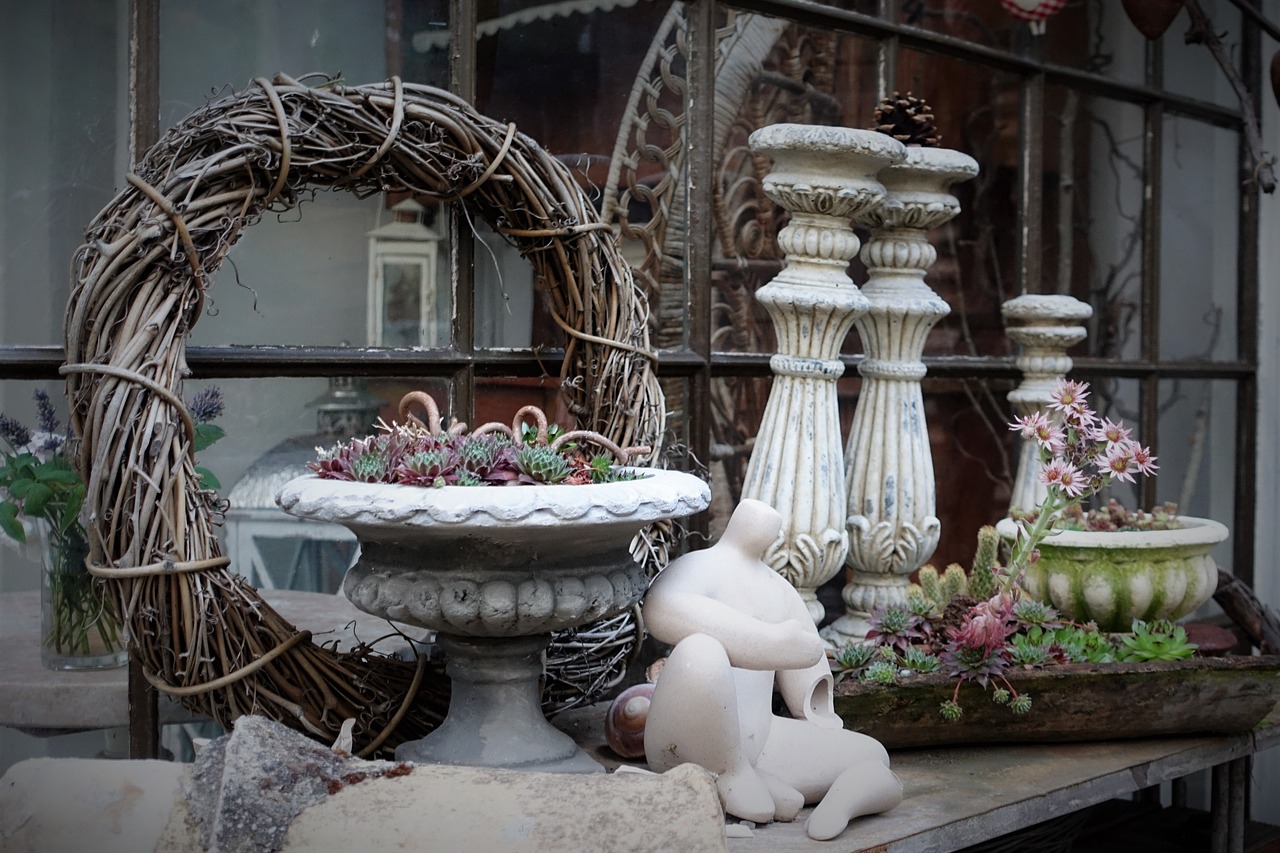
Planters and Pots
When it comes to giving old ceramics a new lease on life, transforming them into planters and pots is one of the most delightful and creative options out there. Imagine taking that chipped vase or broken plate and turning it into a charming home for your favorite plants! Not only does this practice breathe new life into items that might otherwise end up in a landfill, but it also adds a unique touch to your gardening. The beauty of using ceramics as planters lies in their ability to retain moisture and provide excellent drainage, making them perfect for nurturing your green friends.
One of the most popular methods is creating shattered pot planters. This technique embraces the beauty of imperfection, allowing you to craft something stunning from what might seem like a disaster. To get started, gather your broken ceramic pieces and arrange them in a way that appeals to your aesthetic sense. You can use larger shards as the base and smaller pieces to fill in the gaps, creating an eye-catching mosaic effect. This not only showcases your creativity but also serves as a reminder that beauty often lies in the unexpected.
But why stop there? You can also create decorative plant holders from old ceramics. Think about using mismatched plates, teacups, or bowls to create whimsical plant displays. For instance, a shallow bowl can serve as a base for a succulent garden, while a teacup can hold a single vibrant flower, adding a touch of charm to your windowsill. The options are limitless, and the only limit is your imagination! Plus, these projects are not just fun; they also contribute to a more sustainable lifestyle by reducing waste.
Here’s a quick guide to help you get started with your ceramic planters:
| Materials Needed | Steps |
|---|---|
|
|
As you embark on your journey of turning old ceramics into beautiful planters, remember that each piece tells a story. The cracks and chips are not flaws; they are part of the character and history of the item. So, roll up your sleeves, get creative, and let your garden reflect your personality while embracing sustainability!
Q: Can I use any type of ceramic for planters?
A: Yes! Most ceramics are suitable for planters, but ensure they have proper drainage. Avoid using ceramics with toxic glazes for edible plants.
Q: How do I ensure my ceramic planters last?
A: To extend the lifespan of your ceramic planters, consider sealing them with a waterproof sealant, especially if they will be exposed to the elements.
Q: What plants are best for ceramic planters?
A: Succulents, herbs, and small flowering plants are great choices as they thrive in well-drained soil and can adapt to various light conditions.
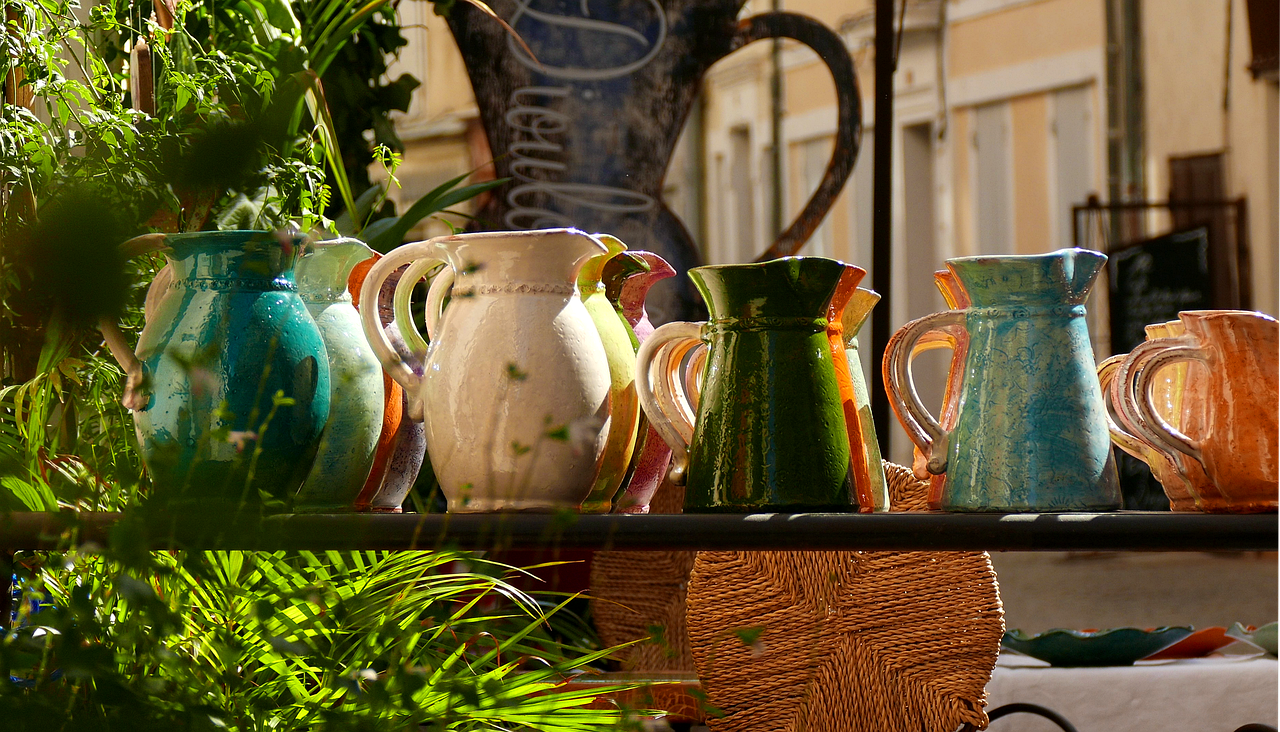
Shattered Pot Planters
Have you ever looked at a broken ceramic pot and thought it was destined for the trash? Think again! are a fantastic way to breathe new life into those unfortunate pieces. Instead of discarding them, why not embrace their imperfections and turn them into charming planters? This creative approach not only showcases your artistic flair but also promotes sustainable gardening practices. Imagine a garden filled with unique, one-of-a-kind planters that tell a story of resilience and creativity.
The beauty of shattered pot planters lies in their versatility. You can use various sizes and shapes of broken ceramics to create an eclectic mix that adds character to your garden or home. For instance, a large cracked pot can become a stunning centerpiece, while smaller fragments can be arranged to form delightful mini-planters. The key is to let your imagination run wild. Just like a painter uses a palette of colors, you can mix and match different ceramic pieces to create a vibrant display.
To get started, gather your broken ceramic pots and some basic supplies. You’ll need the following:
- A selection of broken ceramic pieces
- Potting soil
- Plants or seeds of your choice
- Optional: decorative stones or moss for added flair
Now, let’s dive into the process. First, choose a base piece that will serve as the foundation of your planter. This could be the largest shard or a section of the pot that still has a good shape. Next, arrange smaller pieces around it to create a visually appealing design. You can use a strong adhesive to secure the pieces together, ensuring they stay in place. Once you have your desired arrangement, fill the planter with potting soil and add your chosen plants. Don’t forget to water them and watch them thrive!
One of the most rewarding aspects of creating shattered pot planters is the personal touch you can add. Each planter can reflect your personality and style, making your garden or home truly unique. You can even paint or decorate the ceramic pieces before assembling them, allowing for even more customization. Imagine a colorful mosaic of broken pots that not only serves a practical purpose but also acts as a stunning piece of art.
As you embark on this creative journey, remember that the beauty of these planters lies in their imperfections. Just like in life, sometimes the most beautiful things come from what we perceive as flaws. So, gather those shattered pieces, unleash your creativity, and let your garden flourish with these delightful shattered pot planters!
Q: Can I use any type of ceramic for shattered pot planters?
A: Yes! You can use any broken ceramic pots, but make sure they are clean and free from any hazardous materials. Avoid using pots with toxic glazes.
Q: How do I ensure the plants thrive in these planters?
A: Make sure to provide adequate drainage by leaving some space at the bottom of the planter. You can also add small stones to help with drainage before filling it with soil.
Q: Are there specific plants that work best in shattered pot planters?
A: Succulents and small flowering plants are excellent choices as they don’t require too much soil and can thrive in smaller spaces.
Q: Can I use other materials besides ceramic for planters?
A: Absolutely! You can also repurpose glass, plastic, or metal items as planters. Just ensure they have proper drainage and are safe for plants.
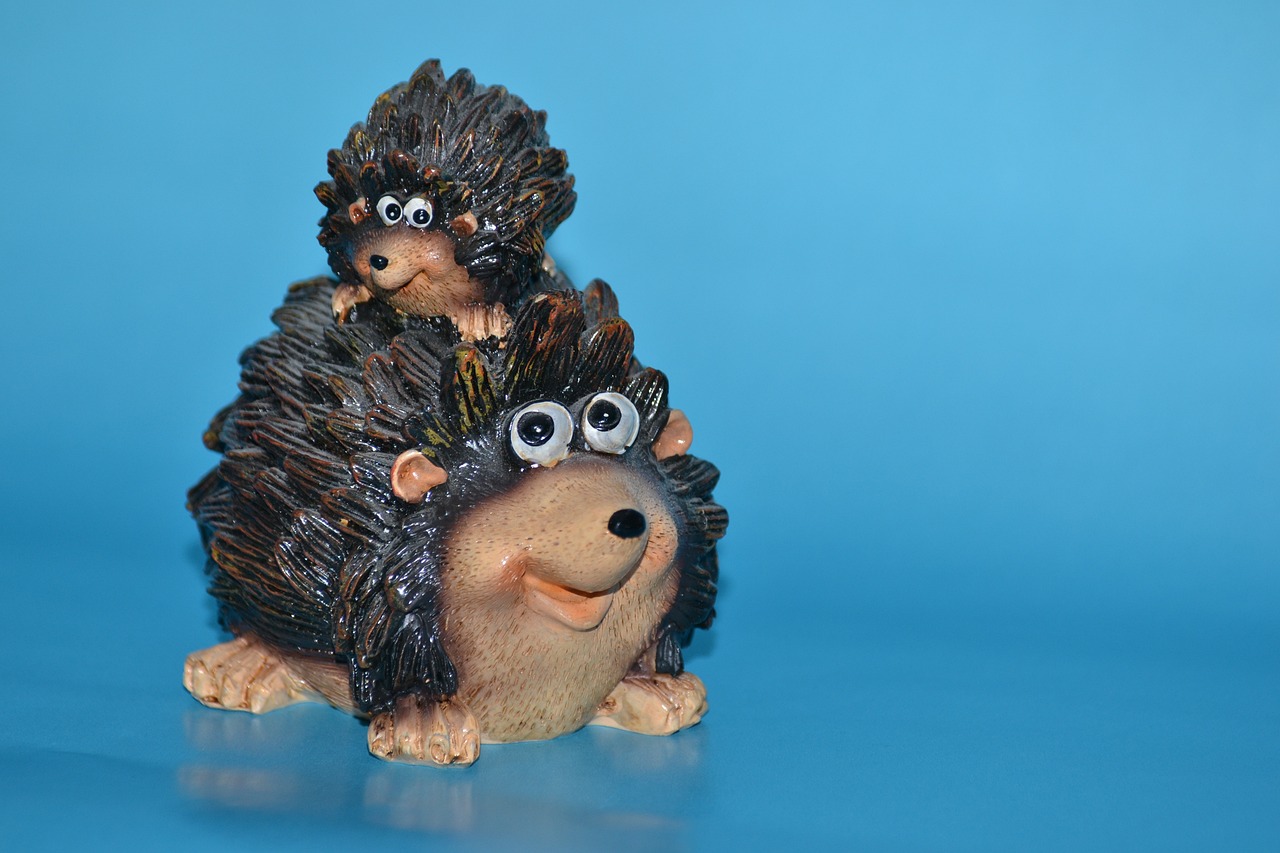
Decorative Plant Holders
Are you tired of the same old plant holders that everyone seems to have? Want to add a splash of personality to your indoor or outdoor garden? Repurposing old ceramics into decorative plant holders is not only a fantastic way to showcase your creativity, but it also promotes sustainability by giving new life to items that might otherwise end up in a landfill. Imagine transforming a chipped bowl or a cracked vase into a stunning home for your favorite plants! The beauty of this project lies in its simplicity and the unique character each piece brings to your space.
To get started, gather your old ceramic items. Look for pieces that have interesting shapes or colors, as these will add a unique touch to your plant holders. You can use anything from broken plates to old teacups. Once you have your collection, it’s time to let your imagination run wild. For example, a cracked teapot can become a whimsical planter, while a broken plate can serve as a chic base for a small succulent garden. The possibilities are truly endless!
When crafting your decorative plant holders, consider the following tips to enhance their aesthetic appeal:
- Choose the Right Plants: Opt for plants that complement the style of your ceramic holder. For instance, a vintage teacup looks delightful with petite succulents, while a large, colorful bowl can house a vibrant array of flowers.
- Drainage Matters: Ensure that your ceramic holder has proper drainage. If it doesn’t, you can drill small holes in the bottom or add a layer of pebbles to help with water flow.
- Personal Touch: Paint or decorate your ceramic pieces before planting. Use non-toxic paint or decoupage techniques to add patterns or colors that match your decor.
After you’ve finished your decorative plant holders, place them in spots where they can shine. A sunny windowsill, a cozy corner of your living room, or even your outdoor patio can become a mini oasis with these charming additions. Not only will they serve as beautiful decor, but they’ll also remind you of the importance of recycling and reusing materials in a fun and engaging way.
Incorporating decorative plant holders made from old ceramics into your home decor is more than just an aesthetic choice; it’s a statement about your commitment to sustainability and creativity. So, the next time you find yourself with a broken ceramic item, don’t toss it away! Instead, think about how you can turn it into a stunning piece of art that brings life and color to your space. Your plants—and the planet—will thank you!
Q: Can I use any type of ceramic for plant holders?
A: Yes! You can use a variety of ceramic items, including bowls, vases, teacups, and even broken plates. Just ensure they are safe to use for planting and have proper drainage.
Q: How do I ensure my plants thrive in these decorative holders?
A: Make sure to provide adequate drainage by adding holes or using a layer of pebbles. Choose plants that suit the size of your holder and the amount of sunlight the location receives.
Q: Can I paint or decorate my ceramic plant holders?
A: Absolutely! Use non-toxic paints or decoupage techniques to customize your holders. This adds a personal touch and enhances their visual appeal.
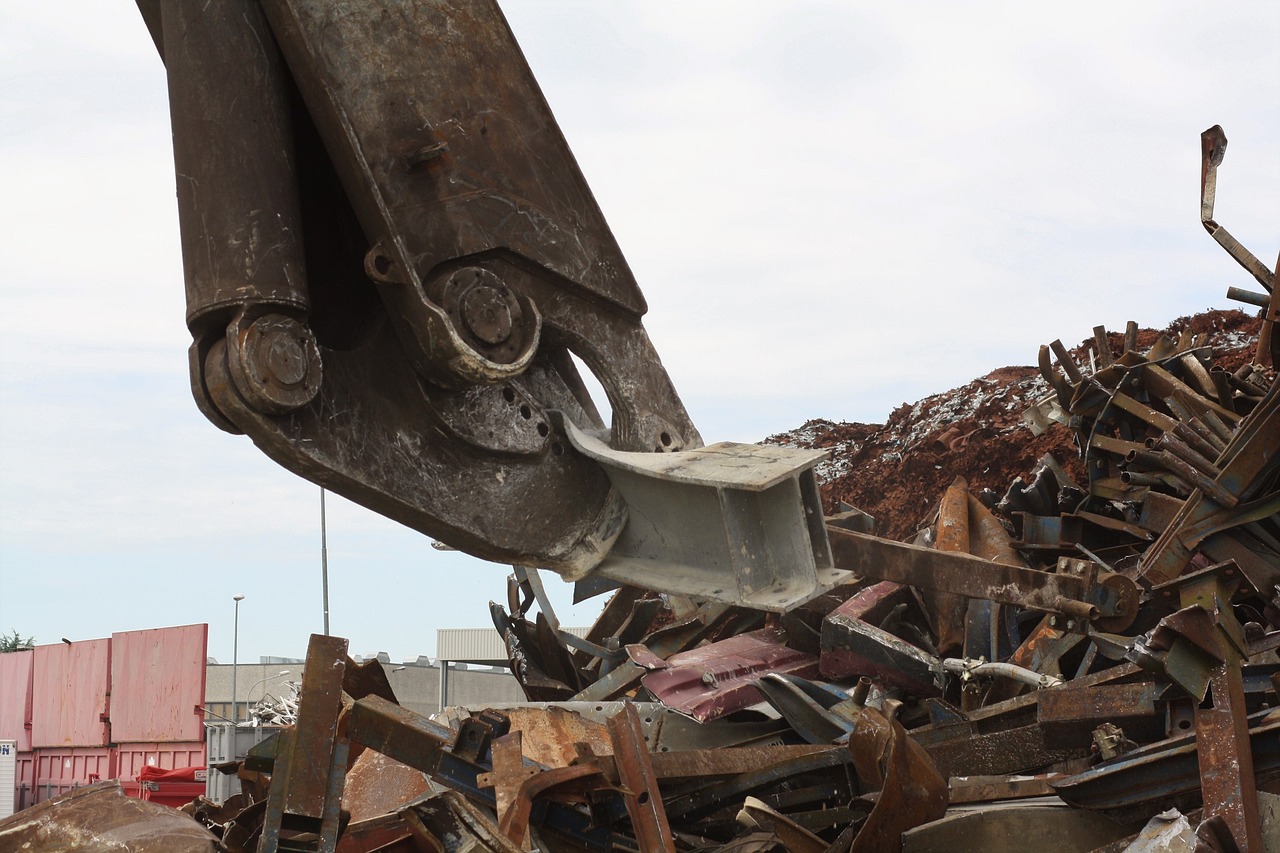
Tableware Redesign
Have you ever looked at your chipped plates or outdated ceramic bowls and thought they were destined for the trash? Well, think again! is not just a creative outlet; it's a sustainable practice that breathes new life into your kitchenware. Imagine transforming those once-beloved pieces into something fresh, stylish, and functional. It's like giving your old ceramics a second chance at life, and it can be a fun project that sparks your creativity.
One of the easiest ways to start your tableware redesign journey is by examining the pieces you already own. Look for items with minor imperfections—those chips or cracks can be turned into unique art pieces or functional items that tell a story. For instance, you can take a chipped plate and turn it into a decorative wall piece. Just add a bit of hanging hardware to the back, and voilà! You've created a stunning focal point for your dining area.
Another exciting idea is to create a mismatched table setting. Instead of throwing away those old plates, consider mixing and matching them to create an eclectic dining experience. This not only minimizes waste but also adds character to your table. You can pair a floral-patterned plate with a solid-colored bowl, and the result will be a charmingly unique table setting that reflects your personality.
If you're feeling a bit more adventurous, why not try your hand at making ceramic jewelry? Small pieces of broken ceramics can be transformed into beautiful pendants or earrings. Simply sand down any sharp edges, drill a small hole, and attach a jump ring to create a one-of-a-kind accessory that showcases your style. This method not only helps reduce waste but also allows you to wear a piece of art that has a special meaning to you.
For those who enjoy a bit of DIY, you can create coasters from your old tiles or plates. Cut them into squares or circles, add a layer of cork to the bottom for protection, and you've got yourself a set of unique coasters that are sure to be conversation starters. You can even personalize them with paint or decoupage techniques, making them truly one-of-a-kind.
Here's a quick comparison table that highlights some of the creative ways to redesign your tableware:
| Project | Description | Materials Needed |
|---|---|---|
| Wall Art | Transform chipped plates into decorative wall pieces. | Hanging hardware, paint (optional) |
| Mismatched Table Setting | Create a unique dining experience with various old ceramics. | Old plates, bowls, and cups |
| Ceramic Jewelry | Make pendants or earrings from broken ceramic pieces. | Drill, jump rings, earring hooks |
| Coasters | Cut tiles into shapes and add cork for a stylish coaster. | Old tiles/plates, cork, adhesive |
As you can see, the possibilities are endless when it comes to redesigning your tableware. Not only does it help reduce waste, but it also allows you to express your creativity and personal style. So, the next time you spot an old ceramic piece gathering dust, consider how you can give it a fabulous makeover!
- Can I really use broken ceramics for DIY projects? Absolutely! Broken ceramics can be transformed into beautiful art pieces, coasters, jewelry, and more.
- What kind of adhesives should I use for ceramic repairs? For best results, use epoxy or super glue, which provide strong bonding for ceramics.
- Is it safe to eat from repurposed ceramics? If you are redesigning tableware, ensure that any glazes or paints used are food-safe.
- How can I find inspiration for my projects? Look online for DIY blogs, social media platforms, or even craft stores for ideas and tutorials.
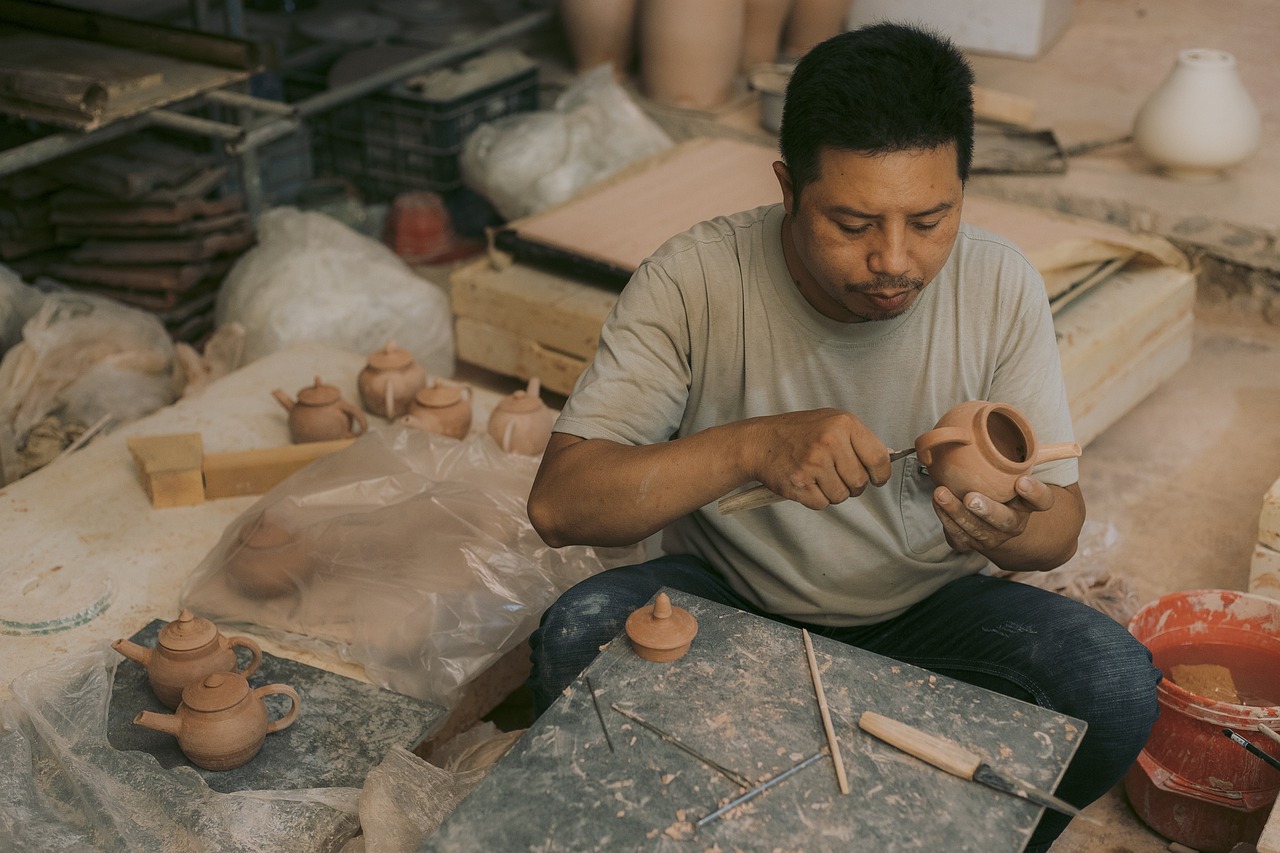
Repairing Ceramics
Repairing ceramics can be a rewarding endeavor, allowing you to breathe new life into cherished items that may have been damaged or broken. Imagine holding a piece of your grandmother's china that has been passed down through generations, only to find it cracked or chipped. Instead of tossing it into the trash, you can restore it, preserving not just the item but also the memories attached to it. In this section, we will delve into various methods for repairing ceramics, ensuring you have the knowledge to tackle those DIY restoration projects with confidence.
One of the simplest and most effective ways to repair ceramics is by using epoxy resin. This two-part adhesive is perfect for bonding broken pieces together, offering a strong hold that can withstand everyday use. When applying epoxy, it's essential to follow the manufacturer's instructions closely for the best results. You'll want to prepare the surfaces by cleaning them thoroughly, ensuring that no dust or grease interferes with the bond. After mixing the resin and hardener, apply it to the edges of the broken pieces and press them together firmly. Allow it to cure completely, and you'll be amazed at how seamlessly the repair blends into the original ceramic.
In addition to epoxy, there are other adhesives that can be used for ceramic repairs. Here’s a quick overview of some popular options:
| Adhesive Type | Best For | Notes |
|---|---|---|
| Epoxy Resin | Heavy-duty repairs | Water-resistant, strong bond |
| Super Glue (Cyanoacrylate) | Small, quick fixes | Fast drying, not water-resistant |
| White Glue (PVA) | Porous ceramics | Easy to clean, not very strong |
For those with a more artistic flair, you might consider using a method known as Kintsugi. This Japanese art of repairing broken pottery with lacquer dusted or mixed with powdered gold, silver, or platinum not only restores the item but also highlights its imperfections, turning them into a stunning feature. Kintsugi teaches us to embrace flaws and celebrate the history of an object, making it a beautiful metaphor for life itself. To try this technique, you will need a lacquer or resin, along with the metallic powder of your choice. After repairing the pieces, carefully apply the lacquer mixed with the powder to the cracks, allowing it to dry and create a unique, shimmering finish.
Finally, if you enjoy a more hands-on approach, consider creating mosaic art from broken ceramics. This method not only repairs but also repurposes the shards into something entirely new and beautiful. Gather your broken pieces, and instead of trying to restore them to their original form, you can create stunning mosaics for your garden or home decor. Arrange the pieces into a design you love, and use a strong adhesive to secure them onto a base. Once set, fill in the gaps with grout to complete your masterpiece. This approach not only recycles your ceramics but also allows you to express your creativity in a vibrant way.
In conclusion, repairing ceramics is not just about fixing what's broken; it's about transforming those pieces into something new and meaningful. Whether you choose to use epoxy, explore the art of Kintsugi, or create mosaics, the possibilities are endless. So, the next time you find a broken ceramic item, don’t despair—embrace the opportunity to repair and reinvent!
Q: Can I repair ceramics that have been chipped or cracked?
A: Yes, many types of adhesives are suitable for repairing chipped or cracked ceramics. Epoxy resin is particularly effective for this purpose.
Q: What is Kintsugi?
A: Kintsugi is a Japanese art form that involves repairing broken pottery with lacquer mixed with precious metals, highlighting the cracks instead of hiding them.
Q: Are there any ceramics that cannot be repaired?
A: While most ceramics can be repaired, pieces that are severely shattered or have too many small fragments may be challenging to restore effectively.
Q: How can I ensure my ceramic repairs are durable?
A: Using the right adhesive, following the instructions carefully, and allowing sufficient curing time will help ensure your repairs are strong and long-lasting.

Using Epoxy and Adhesives
When it comes to repairing ceramics, the right adhesive can make all the difference. Using epoxy and other adhesives not only allows you to restore your cherished items but also ensures that they remain functional and beautiful for years to come. Imagine holding a beloved vase that has been through a few mishaps, only to see it transformed back into a stunning centerpiece on your dining table. That's the magic of using the right materials!
Epoxy is a popular choice among DIY enthusiasts for several reasons. Its strong bonding capabilities make it ideal for ceramic repairs, especially for pieces that will be used or handled frequently. Unlike regular glue, epoxy creates a bond that is both durable and resistant to moisture, making it perfect for items that might be exposed to water or humidity. Moreover, epoxy comes in various formulations, allowing you to choose one that suits your specific needs.
Before diving into your ceramic repair project, it's essential to understand the types of adhesives available. Here's a quick overview:
| Type of Adhesive | Best For | Characteristics |
|---|---|---|
| Epoxy | Heavy-duty repairs | Strong, waterproof, and durable |
| Ceramic glue | General repairs | Good for light to moderate use |
| Super glue (cyanoacrylate) | Quick fixes | Fast-drying but less durable |
When using epoxy, it’s crucial to follow the manufacturer’s instructions for the best results. Typically, you’ll start by cleaning the surfaces to be bonded, ensuring they are free of dust and grease. Then, mix the epoxy according to the directions—this usually involves combining a resin and a hardener. Once mixed, apply the epoxy to one of the surfaces and press the pieces together firmly. Hold them in place for a few minutes to allow the adhesive to set, and be sure to wipe away any excess before it hardens.
In addition to epoxy, there are other adhesives that can be used for ceramic repairs. For instance, ceramic glue is specifically designed for this purpose and can be a great alternative for less demanding applications. However, if you’re looking for something that can withstand the test of time, epoxy remains the champion!
Remember, the beauty of ceramics often lies in their imperfections. Sometimes, a well-repaired piece can tell a story of resilience and creativity. So, as you embark on your ceramic repair journey, embrace the process and enjoy the satisfaction of bringing new life to your treasured items.
- Can I use regular glue for ceramic repairs? While regular glue can work for lightweight items, it's best to use epoxy or ceramic glue for more durable repairs.
- How long does epoxy take to cure? Most epoxy adhesives take about 24 hours to fully cure, but you can usually handle the item after a few hours.
- Is it safe to use repaired ceramics for food? If you’re using food-safe epoxy and the repair is done properly, it can be safe, but always check the manufacturer's guidelines.

Creative Mosaics
Creating beautiful mosaics from broken ceramics is not just a fantastic way to recycle; it's also an opportunity to express your artistic flair! Imagine turning those chipped plates or shattered pots into stunning works of art that can enhance your home or garden. The beauty of mosaics lies in their ability to transform what was once considered waste into something visually striking and entirely unique. You can create everything from vibrant garden paths to intricate wall art, all while embracing sustainability.
To get started, gather your broken ceramic pieces. These can be anything from old dishes, tiles, or even pottery that has seen better days. The first step is to clean the shards thoroughly to remove any dirt or residue. After that, you can start planning your design. Whether you want to create a simple pattern or a complex image, sketching it out on paper can help guide your work.
Once you have your design, it's time to prepare your base. This could be a wooden board, a piece of concrete, or even an old table. The key is to ensure that the surface is sturdy enough to hold the weight of the ceramics. Apply a layer of adhesive suitable for ceramics, like epoxy or mortar, to the base. Start placing your ceramic pieces according to your design. Don’t be afraid to mix colors and textures; the charm of mosaics often comes from their eclectic nature!
After arranging your pieces, let the adhesive dry completely before moving on to the next step. Once dry, you can fill in the gaps between the ceramics with grout. This not only adds stability to your mosaic but also enhances its visual appeal. Choose a grout color that complements your ceramics; a contrasting color can make your design pop! Spread the grout over the entire surface, ensuring it fills all the gaps, and then wipe off the excess with a damp sponge.
Finally, once everything is set and dry, consider sealing your mosaic with a clear sealant to protect it from the elements, especially if it's intended for outdoor use. The result? A stunning piece of art that tells a story of creativity and sustainability. You’ve not only saved ceramics from the landfill but also created something truly special that can be cherished for years to come!
Now, let’s address some common questions about creating mosaics with old ceramics:
- What types of ceramics can I use for mosaics? Almost any ceramic item can be used, including plates, bowls, tiles, and pots. Just ensure they are clean and free of any sharp edges.
- Do I need special tools? While you can use basic tools like scissors or pliers to break the ceramics, a tile cutter can make the process easier. Additionally, having a sponge and a mixing container for the grout is helpful.
- Can I use mosaics outdoors? Yes! Just make sure to use weather-resistant adhesives and sealants to protect your artwork from the elements.
Frequently Asked Questions
- What types of ceramics can be recycled or reused?
You can recycle or reuse a wide variety of ceramics, including broken plates, chipped mugs, and old flower pots. The key is to look for items that may no longer serve their original purpose but can be transformed into something new and beautiful.
- How can I upcycle old ceramics into home decor?
There are countless creative ways to upcycle ceramics! You can turn broken pots into charming planters, create decorative plant holders, or even redesign chipped tableware into unique art pieces. The possibilities are endless, and it’s a fantastic way to express your creativity while being eco-friendly.
- What are some tips for repairing broken ceramics?
Repairing ceramics can be quite rewarding! Start by cleaning the broken edges and using a strong adhesive like epoxy for a durable bond. For larger pieces, you might consider using specialized ceramic repair kits that include fillers and paints to help restore the item's appearance.
- Can I create mosaic art from broken ceramic pieces?
Absolutely! Broken ceramic fragments are perfect for creating stunning mosaic art. You can use them to decorate tabletops, garden paths, or even create wall art. Just ensure you wear gloves while handling sharp edges and have fun with your designs!
- What should I do with ceramics that can’t be repaired or reused?
If you have ceramics that are beyond repair, consider checking if your local recycling program accepts them. Alternatively, you can use them in creative ways, like filling in garden paths or using them as drainage material in potted plants.
- Is it safe to use repaired ceramics for food?
Using repaired ceramics for food is generally safe if you use food-safe adhesives and sealants. However, it’s important to ensure that any repairs are sturdy and that the ceramics are clean. Always check the manufacturer's guidelines for the adhesives you use.



















